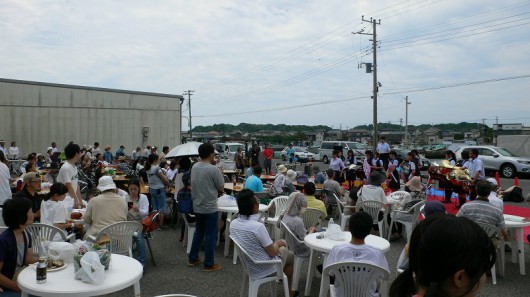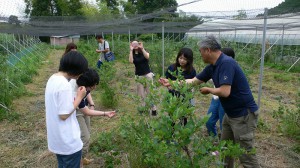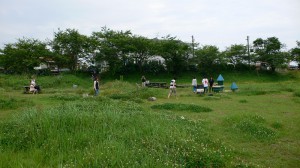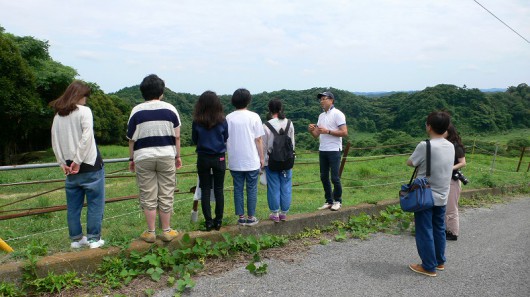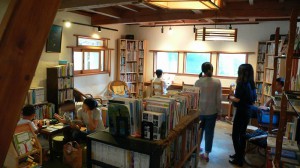A Farming Experience in Isumi
Thanks to the Tokyo Bay Aqua-Line, Isumi is easily accessible by both car and bus to people living in Japan’s two most populous cities, Tokyo and Yokohama. This proximity, combined with Isumi’s abundance of farmland, make it an attractive destination for those wishing to have a taste of an agrarian lifestyle. Nōgyō taiken (farming experiences) are run by a number of organizations in the area, as well as by private individuals, and give members of the public a chance to try out a little of the work farmers engage in throughout the year. With the weather now warming, the rice-growing season has begun; and eager to have a go at tanemaki (seed-scattering) myself, last week I took part in an event run at Tsurukame (crane and tortoise*1) Farm.
The day began at 9:15am with my and my family’s arrival at the farm, where we were met by owners Tsuru and Shūko-san. The two of them have been running a farm share program for a number of years catering to both locals (some of whom participate annually) and those arriving from further afield. The first order of business, once everyone had arrived, was a lecture given by Tsuru-san on the process of sorting and germinating rice grains prior to sowing them.
It was fascinating to learn how saltwater treatment is used in selecting which seeds to use. Tsuru-san demonstrated how unripe grains or those that have been damaged tend to float in certain densities of saltwater, thus providing a useful means of seperating them from those that will produce a good crop. Heating can then be used to start the germination process, leaving the farmer with grains that can be scattered and grown into healthy seedlings. Having prepared a batch ready for us, Tsuru-san then led us to one of his barns where we were able to take part in the filling of the seed trays ourselves.
Much experience has led to the formulation of a tried and tested method for producing the best seedlings. The depth of soil the seeds are sown into is important, as well as the number scattered in each tray. Too many means there is a danger they will be overcrowded and unable to thrive, where as too few risks them growing too sparsely, which makes them prone to falling without the support of their neighbors. For that reason, once we had laid a good bed of soil in each tray, we all tried our best to scatter our pre-weighed seeds as evenly as possible. I found it surprisingly difficult!
Once that is done more soil delicately scattered over the grains and levelled off. Each tray will then be laid out for an even watering and over the next 40 days the plants will sprout and grow into healthy seedlings ready to be transferred outside to waiting rice fields.
Following the morning’s work, we all then returned to the comfort of Tsuru and Shūko-san’s home and ate a delicious meal consisting of organic dishes prepared with Tsurukame Farm’s rice and miso, as well as additional items each participating group had brought with them. Both relaxing and delicious, the meal provided an excellent opportunity for us all to get to know each other and question our hosts a little further about their farming methods and objectives. Nōgyō taiken a great means of educating yourself on how food is produced, trying your hand at a little satisfying work, and meeting new and interesting people.
*1 The crane and the tortoise are symbols of longevity in Japan.
(Max)











